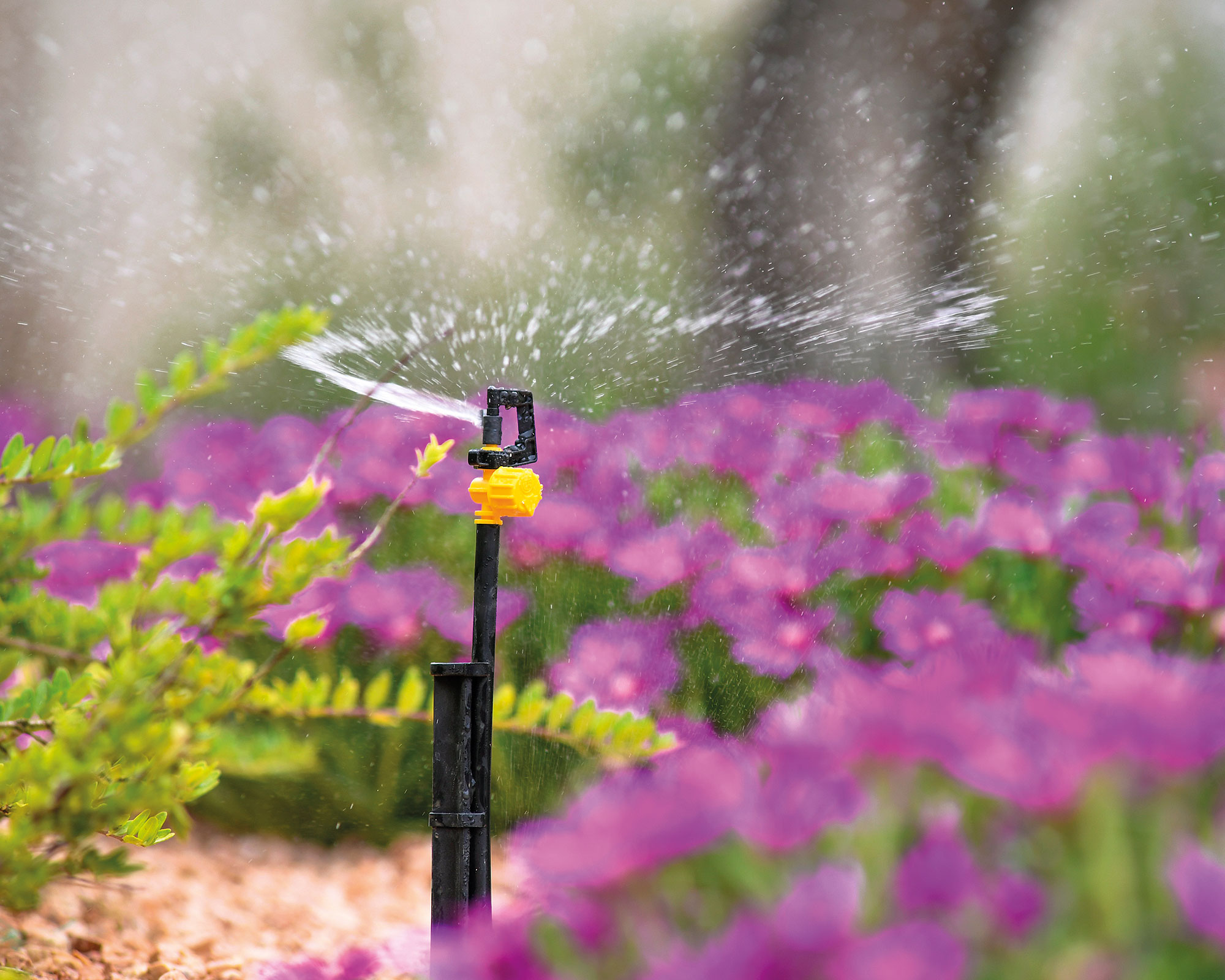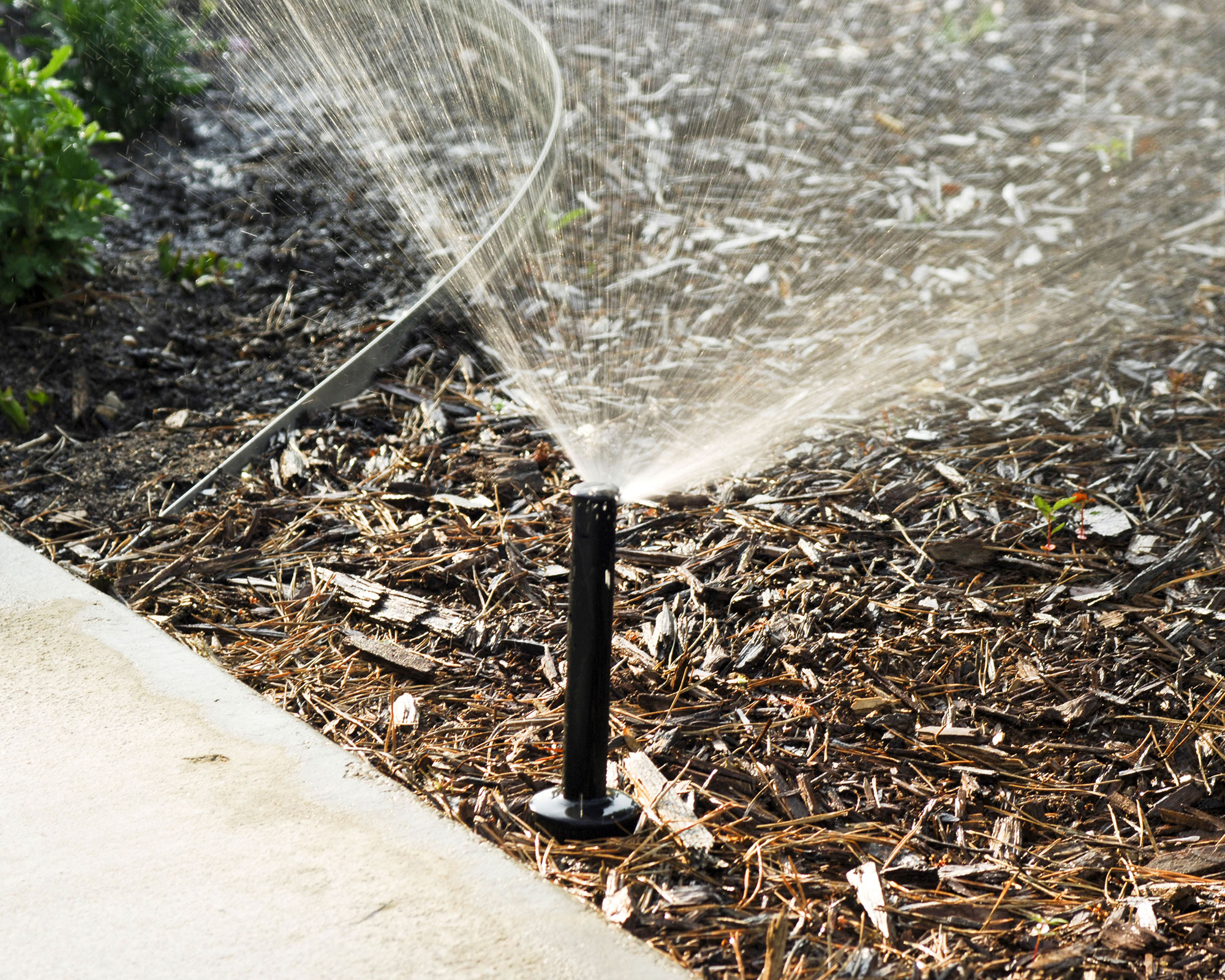Sprinkler rotor vs spray: what’s the difference?
When it comes to sprinkler rotor vs spray, both have their benefits and limitations. Get in the know


What’s the difference between a sprinkler rotor vs spray? Both can help make irrigating areas of the yard a low effort job so you can keep lawns and planting healthy when there isn’t sufficient rainfall.
But it’s important to understand how each of these types of sprinkler works and therefore the pros and cons so you can choose the best option for watering plants and other areas of your backyard.
Our guide has the details you need along with expert advice so you can make a judgement on sprinkler rotor vs spray and ensure turf, trees, shrubs, vegetables and flowers all thrive.
The benefits and disadvantages of sprinkler rotor vs spray
‘The sprinkler system is a convenient and discreet method of irrigation that can cover all areas of the garden, including large lawn areas,’ says Edward Cantle, Gardena expert. ‘It can be set up bespoke to your garden needs. Garden sprinkler systems are also perfect if you have an irregular shaped garden as you can place your sprinklers and set the range where needed.’
But if you’re deciding on sprinkler rotor vs spray, check out how each will irrigate the yard, and any downsides you should bear in mind in our head to head.
And if you're also wondering about the differences between a sprinkler vs soaker hose, we've got all the info you'll need on that in our dedicated guide.

Pros and cons of rotor sprinklers
A rotor sprinkler is a good choice if you have a big lawn area to care for. ‘The area coverage is greater with rotor sprinklers,’ explains Sarah Dixon, UK and international marketing manager at Hozelock.
While the term rotor is used generally, be aware that there are both rotary nozzles, which fit onto spray head bodies, and rotary sprinklers (also called rotor sprinklers).
Rotors produce streams of water while rotating through 360˚ or part circles, and they throw water further than spray heads. Bear in mind, however, that with a rate between 0.5 and 1in per hour, rotors take longer to produce the same amount of water as spray heads. The water has more time to soak in, though, which avoids runoff and also makes them preferable for sloping gardens, and yards with compacted soils, as well as for grass.
There are different rotors to suit areas from medium in size to large and different nozzles can throw water to various distances. In a hard water area, a durable impact rotor sprinkler – the version that makes the distinctive noise – is a top option to avoid clogging.
Note that optimal water pressure for rotors is between 45 and 50psi or a little lower for a rotary nozzle.
Be mindful that, when it comes to installation, it can be a little more complicated to get the coverage right than with spray heads.

Pros and cons of spray sprinklers
Spray heads are a better option for irrigating small and medium areas of the garden, as well as those that are irregularly shaped. They can be good for raised garden beds in a vegetable plot or a small lawn, for example.
Rather than rotating, spray heads create a constant stream of water in a particular area. Use one of these and it will also provide more water in less time than a rotor. Count on around 1.5 to 2in per hour
Generally, interchangeable nozzles allow you to determine the shape and size of the area, and there are options to cope with narrow strips. Spray heads are therefore ideal for use near to the house, or beside a patio, for example, as well as for watering flower beds, so that you can precisely target the planting and avoid wasting water on hardscaping.
Pop-up designs ensure that the head is hidden until it’s in use so they can be a discreet feature of the backyard. There are plenty of creative ways to hide sprinkler valves, however, if you want to keep yours out of sight.
A downside of choosing a spray head is that these are more inclined to clog up, so you’ll likely spend more time on maintenance than you would with rotors.
Take your water pressure into account when considering a spray head as higher water pressures can result in wasteful misting. A pressure of 20 to 30psi is best.

Can you mix rotary and spray sprinklers?
You can mix rotary and spray sprinklers in your backyard. However, you should not mix them in an individual irrigation zone. The reason? It’s the different precipitation rates. Rotors will take two or three times as long as spray heads to produce the same amount of water.
If you set the run time for the entire zone to suit the precipitation rate of the rotors, then the spray heads will have overwatered the area. And if you set the run time to suit the rate of the spray heads, then the rotors will underwater.
Are rotor sprinklers better?
Whether rotary sprinklers are better depends on the area you need to irrigate. ‘A rotor head is always more efficient than a fixed spray head due to soil percolation rates,’ explains Darik Chandler from Rachio.
‘Fixed spray heads often do not allow for proper soil absorption rates, leading to runoff. However, fixed heads are necessary to cover smaller areas that a rotary nozzle/rotor head cannot achieve without wasting water.’
Hozelock’s Sarah Dixon agrees that rotary sprinklers are better in some ways ‘as you can water more plants with one unit. However, some water may be wasted as it’s not as targeted as spray sprinklers,’ she also notes.
Once you've chosen the right one for your plot, when teamed with a self-watering system they can be a great option for watering plants while you're away on vacation.

Sarah is a freelance journalist and editor writing for websites, national newspapers, and magazines. She’s spent most of her journalistic career specialising in homes and gardens and loves investigating the benefits, costs and practicalities of home improvement. It's no big surprise that she likes to put what she writes about into practice, and is a serial house revamper.
